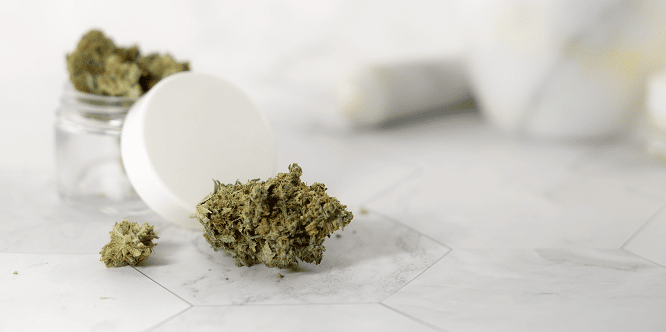TAKEAWAY: Synthetic drugs, are becoming more prevalent in workplaces as users look for quicker, greater, and easier highs and dealers look for ways to circumvent drug laws. Here’s what you need to know as an employer.
Jump Ahead

Looking for a reliable way to test for synthetic drugs? Ask us about Synthetic Drug Detection Today!
SureHire USA offers comprehensive synthetic cannabinoid testing. We have the ability to detect synthetic compounds in both urine and oral fluid specimens. Our extensive network of testing facilities are equipped with the latest technology so you can feel confident knowing results are reliable and accurate. Contact us today to learn more about our synthetic cannabinoid testing services!
When U.S. researchers looking first created synthetic cannabinoids to help them study the effects of marijuana, they probably had no idea how popular these so-called designer drugs would become. In 2009, there were just two varieties of synthetic cannabinoids and four types of synthetic stimulants (cathinones) identified in the U.S. By 2013, worldwide, there were 348 known designer drugs being sold to drug users, according to the United Nations.
Today, more than 1700 of these designer drugs have been identified. These synthetic, or designer drugs, are becoming more prevalent in workplaces as users look for quicker, greater, and easier highs and dealers look for ways to circumvent drug laws. Most synthetic drugs are chemically different from the drugs they mimic, and legislators must continuously write new laws to cover them. But they also present an obvious danger in the workplace. Here is what you need to know as an employer.
Common synthetic drugs
The 2 major categories of synthetic drugs are synthetic stimulants and synthetic cannabinoids. Synthetic cannabinoids mimic the effects of THC, the active ingredient in marijuana, and are by far the most commonly encountered synthetic drug in the workplace. Synthetic stimulants, also known as cathinone, are designed to mimic the effects of drugs such as cocaine and amphetamines. They include drugs such as bath salts, synthetic opioids, and ecstasy.
Synthetic drugs in the workplace
Synthetic drugs can pose a massive problem in the workplace. They are notoriously difficult to detect. Many, such as synthetic cannabinoids, are also odourless. And because synthetic drugs are often chemically different from the drugs, they can often circumvent existing laws. The speed with which these drugs can be produced makes it almost impossible for lawmakers to catch up. But there are other concerns in the workplace. These same chemical variations can also make it difficult for drug testing programs to identify use among workers.
That’s a problem because synthetic drugs can also be more dangerous. Routine drug tests rarely detect synthetic drugs. That’s because the chemicals used to create synthetic drugs vary widely and are frequently tweaked to make them more potent. This increases both their addictiveness and effects. There is also very little research on the impact of these compounds or their interactions with legitimate prescription drugs. In 2021, as the U.S. hit its highest number of drug deaths, over 75% of overdose deaths involved a synthetic opioid.
Many synthetic drugs, notably bath salts, have been associated with violent behaviour in the workplace and elsewhere. Other effects can include:
- Hallucinations
- High blood pressure
- Tremors
- Anxiety
- Paranoia
- Seizures
- Suicidal thoughts
- Tachycardia (i.e., rapid heartbeat)
- Delusions
- Nausea
- Agitation
- Psychosis
Synthetic cannabinoids vs. marijuana
Synthetic cannabinoids were first produced by U.S. research scientists who used the compounds to study the long-term effects of cannabis. But there are significant differences between synthetic cannabinoids and the real thing. For one thing, they tend to be odourless and far more challenging to detect through smell. Because there are now so many varieties of synthetic cannabinoids, their effects are also difficult to predict, which makes them much more dangerous.
Since producers often lace synthetic cannabinoids with other chemicals, including opioids, blood thinners and stimulants, they tend to be far more potent than natural THC. And because the process of making them is often imprecise and varies by dealer, the dosage is not predictable. They can also vary widely in terms of the intensity of their effect and the length of time a user will remain “high”. An additional problem with synthetic cannabinoids is that, unlike natural THC, they can also stimulate non-cannabinoid receptors in the brain, which leads to other unanticipated effects.
One thing that is certain is that synthetic cannabinoids are extremely dangerous. In fact, one study determined that they were 30 times more likely to harm users than natural forms of marijuana.
Common workplace approaches to synthetic drug use
Employers are taking various approaches to solving the issue of synthetic drugs in the workplace and the potential safety hazard they represent. Education is becoming a key area of focus since many workers are unaware of the potential risks of using these drugs. These education efforts should focus on both the health risks and employment consequences of synthetic drug use.
Many employers are wisely adding synthetic drug use to their workplace drug and alcohol policies. This should include a prohibition on synthetic drug use in the workplace and clearly defined consequences for use in the workplace. The latter could consist of everything up to and including dismissal.
Finally, some drug testing service providers offer an option to add testing for synthetic drugs, particularly synthetic cannabinoids. This provides an extra layer of protection for workplaces experiencing a synthetic drug problem. Workers are tested for the presence of synthetic cannabinoids in the same way they are tested for other drugs.
Detecting synthetic drug use
Some testing providers, such as SureHire, have developed testing panels targeting synthetic drug use. Employers can add these panels to various testing situations, including pre-employment, reasonable suspicion, and post-accident.
At SureHire, in addition to a wide variety of available drug panels that focus on synthetic stimulants, employers can leverage synthetic cannabinoid tests to ensure the safety of their employers and the public. These tests can detect both the drug and its metabolites and are available as both urine-based metabolite testing and parent oral fluid tests. Laboratory confirmation testing is also available via LC-MS/MS testing.

Looking for a reliable way to test for synthetic drugs? Ask us about Synthetic Drug Detection Today!
SureHire USA offers comprehensive synthetic cannabinoid testing. We have the ability to detect synthetic compounds in both urine and oral fluid specimens. Our extensive network of testing facilities are equipped with the latest technology so you can feel confident knowing results are reliable and accurate. Contact us today to learn more about our synthetic cannabinoid testing services!
You May Also Be Interested In…
- Do You Have Reasonable Suspicion?
 Employers cannot initiate reasonable suspicion testing without first going through the 5-step process. Reasonable suspicion training provides critical information about how to initiate reasonable suspicion testing, including the 5-step process and other tools that employers can use to help manage the misuse of alcohol and drugs in the workplace.
Employers cannot initiate reasonable suspicion testing without first going through the 5-step process. Reasonable suspicion training provides critical information about how to initiate reasonable suspicion testing, including the 5-step process and other tools that employers can use to help manage the misuse of alcohol and drugs in the workplace. - An Employer’s Guide: What You and Your Employees Need to Know About DOT Drug & Alcohol Testing
 When implementing or maintaining DOT Drug & Alcohol testing, there are key areas that employers should consider.
When implementing or maintaining DOT Drug & Alcohol testing, there are key areas that employers should consider. - SureHire Occupational Testing Acquires COHR Health: A Positive Step Towards Safe, Healthy, Productive Workforces and Communities
 We are thrilled to announce that today, May 6, 2024, SureHire Occupational Testing has officially acquired COHR Health, a well-known leader in occupational health services. Read on…
We are thrilled to announce that today, May 6, 2024, SureHire Occupational Testing has officially acquired COHR Health, a well-known leader in occupational health services. Read on… - Occupational Testing Use Case – Mining
 In this case study, we will explore how mining companies can use various types of occupational tests to reduce Total Recordable Incident Rates (TRIR) long term.
In this case study, we will explore how mining companies can use various types of occupational tests to reduce Total Recordable Incident Rates (TRIR) long term. - 9 Strategies to Keep Workers Cool on Drilling Sites During Hot Summer Months
 This article delves into strategies to keep workers cool and safe on drilling sites during the hot summer months.
This article delves into strategies to keep workers cool and safe on drilling sites during the hot summer months. - Hearing Conservation Basics: How to Manage Occupational Noise
 Learn how to proactively mitigate occupational noise risks and help prevent NIHL among workers.
Learn how to proactively mitigate occupational noise risks and help prevent NIHL among workers.

